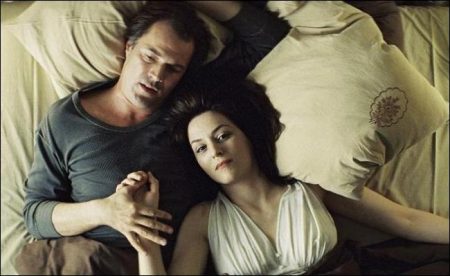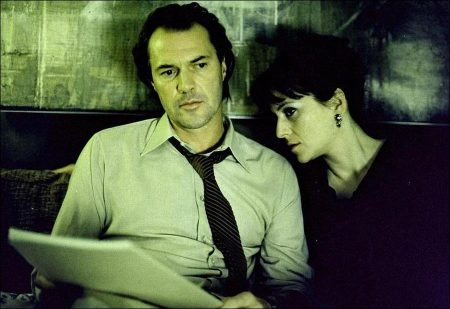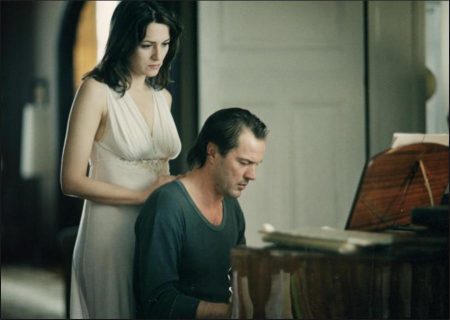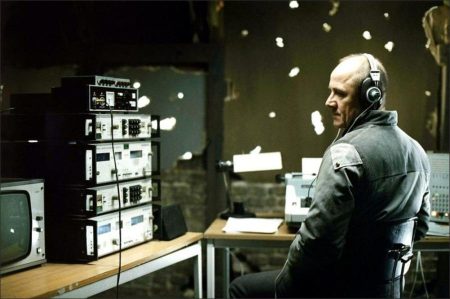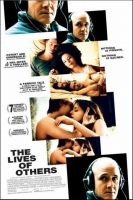Tagline: Nothing is private. Nothing is sacred.
East Berlin, November 1984. Five years before its downfall, the former East-German government ensured its claim to power with a ruthless system of control and surveillance. Party-loyalist Captain Gerd Wiesler hopes to boost his career when given the job of collecting evidence against the playwright Georg Dreyman and his girlfriend, the celebrated theater actress Christa-Maria Sieland.
After all, the “operation” is backed by the highest political circles. What he didn’t anticipate, however, was that submerging oneself into the world of the target also changes the surveillance agent. The immersion in the lives of others–in love, literature, free thinking and speech–makes Wiesler acutely aware of the meagerness of his own existence and opens to him a completely new way of life which he has ever more trouble resisting. But the system, once started, cannot be stopped. A dangerous game has begun.
The Lives of Others (German: Das Leben der Anderen) is a 2006 German drama film, marking the feature film debut of filmmaker Florian Henckel von Donnersmarck, about the monitoring of East Berlin residents by agents of the Stasi, the GDR’s secret police. It stars Ulrich Mühe as Stasi Captain Gerd Wiesler, Ulrich Tukur as his superior Anton Grubitz, Sebastian Koch as the playwright Georg Dreyman, and Martina Gedeck as Dreyman’s lover, a prominent actress named Christa-Maria Sieland.
The film was released in Germany on 23 March 2006. At the same time, the screenplay was published by Suhrkamp Verlag. The Lives of Others won the 2006 Academy Award for Best Foreign Language Film. The film had earlier won seven Deutscher Filmpreis awards—including those for best film, best director, best screenplay, best actor, and best supporting actor—after setting a new record with 11 nominations. It was nominated for Best Foreign Language Film at the 64th Golden Globe Awards. The Lives of Others cost US$2 million and grossed more than US$77 million worldwide as of November 2007.
Director’s Statement
German movies produced after the reunification generally, and strangely, depict the GDR (the German Democratic Republic or former East Germany) as funny or moving. Both my parents come from the East, so as a child, I was often in East Germany to visit friends and relatives. A cousin of my father’s had been named chief of protocol of Erich Honecker, the East German head of state and boss of the ruling S.E.D party (Sozialistische Einheitspartei Deutschlands, the Socialist Unity Party of Germany).
Other people we knew had very normal jobs, yet one could see the fear in all of them, right up to the end of the regime. Fear of the Stasi (The State Security), fear of the 100,000 highly trained employees whose sights were trained on one thing: “The Lives Of Others”: the lives of those who thought differently, who were too free spirited and above all, the artists and people working in the arts.
Every aspect of life was recorded. There was no private sphere and nothing was sacred, not even one’s closest family members. I met Stasi victims who had been jailed and harassed in Hohenschonhausen (where the central detention center of the Stasi was located). I asked “unofficial agents” about their activities and I talked to documentary filmmakers who had worked on these topics.
In the film, each character asks questions that we confront every day: how do we deal with power and ideology? Do we follow our principles or our feelings? More than anything else, The Lives of Others is a human drama about the ability of human beings to do the right thing, no matter how far they have gone down the wrong path. — Florian Henckel von Donnersmarck
GDR (German Democratic Republic) 1949-1989
Background Information
The rule of the Socialist Unity Party of Germany (SED – Sozialistische Einheitspartei Deutschlands) was based on a worldview informed by Marxist-Leninism and molded by class warfare. The Socialist Unity Party had expectations from “its people,” which it laid down in the form of programs, plans, directives and clear restrictions, which resulted, for example, in political criminal law.
The conceptual eradication of specific human individuality allowed the Ministry for State Security (Ministerium für Staatssicherheit, MfS) to categorize the “others,” whom it interrogated and spied on, in order to transform them into objects of its hatred. The abbreviation “Stasi” was the SED dictatorship’s designated secret apparatus of repression.
To be arrested was seen as proof that one was an enemy or part of a hostile, negative “element.” The Stasi understood its party program as an active and threatening involvement in the “lives of others,” in order to change them radically when they no longer corresponded to the party’s expectations.
The central detention center of the Stasi was in Berlin Hohenschönhausen and young interrogators were trained at the Stasi College in Potsdam-Eiche. The term “Operative Procedure” (Operativer Vorgang, OV) was used by the Stasi to designate the highest level of monitoring of suspected individuals. (In The Lives of Others, the playwright Georg Dreyman is the subject of an “Operative Procedure.”)
One typical “offense against the system,” punishable by two years of imprisonment, was “illegal border crossing”. Even planning and trying to “flee the republic” was punishable. The fortification of the inner-German borders and the Berlin Wall gave rise to escape agents from the West and whoever contributed to taking someone “abroad” was threatened with a sentence of up to eight years.
In the GDR, a nation under surveillance, there were about 13,000 of the 91,000 employees of the Stasi regulating an army of about 170,000 Unofficial Employees (Inoffizielle Mitarbeiter, IM) in order to realize the SED’s delusional project of the total surveillance of an entire society.
Manfred Wilke (Professor Manfred Wilke is the head of the Lankwitz Division of the Research Committee SED Regime at the Freie Universität Berlin. Wilke was a historical adviser forThe Lives of Others).
Continue Reading and View the Theatrical Trailer
The Lives of Others (2007)
Directed by: Florian Henckel von Donnersmarck
Starring: Martina Gedeck, Ulrich Muehe, Sebastian Koch, Ulrich Tukur, Thomas Thieme, Volkmar Kleinert. Matthias Brenner, Marie Gruber, Volker Michalowski, Werner Daehn
Screenplay by: Florian Henckel von Donnersmarck
Production Design by: Silke Buhr
Cinematography by: Hagen Bogdanski
Film Editing by: Patricia Rommel
Costume Design by: Gabriele Binder
Set Decoration by: Frank Noack
Art Direction by: Christiane Rothe
Music by: Stéphane Moucha, Gabriel Yared
MPAA Rating: R for some sexuality and nudity.
Studio: Sony Pictures Classics
Release Date: February 9, 2007
Visits: 72
